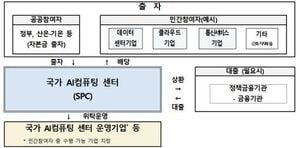On October 19, 2025, the Arab world found itself at the crossroads of remarkable economic, scientific, and technological transformation, with new records and milestones capturing the attention of observers across the globe. According to a report published by Aramco and highlighted by QNA and the Energy Research Unit, the Gulf countries have achieved a historic gross domestic product (GDP) that surpassed $10 trillion, representing an increase of more than 18% compared to figures from the previous year. This surge in economic output was largely attributed to the oil and gas sectors, which continue to be the backbone of the region’s prosperity.
But it wasn’t just the numbers that turned heads—there was a palpable sense of momentum in both traditional and emerging sectors. The oil market, for instance, recorded a record high in the third quarter of 2025, with total production reaching 26.72 million tons, an increase of about 27% over the same period in 2024. The United States topped the list of liquefied natural gas (LNG) exporters, with Qatar and Australia holding strong in second and third places, respectively, according to the Energy Research Unit report.
The Arab Gulf countries, especially, stood out for their robust export figures. From January to September 2025, they exported approximately 20.10 million tons of oil, maintaining a daily average of 4.79 million tons. This remarkable performance was mirrored in the global LNG market, which saw total exports rise by 2% to 207.7 million tons in the first half of 2025. Notably, the ten leading exporters accounted for about 89% of all global LNG shipments between July and September, though this was a slight decrease from the previous year’s share.
Amidst these impressive statistics, Algeria managed to retain its position among the world’s top ten LNG exporters, coming in at tenth place despite a notable dip in export volume. The country shipped 2.13 million tons of LNG in the third quarter of 2025, down over 18% from 2.61 million tons during the same period in 2024. This decline was primarily attributed to maintenance work at the Arzew and Skikda facilities, which lasted 25 days in May. In the first half of 2025, Algeria’s LNG exports dropped by more than 23%, totaling 4.79 million tons compared to 6.25 million tons in the first half of the previous year, landing it in ninth place globally for that period.
Elsewhere, Russia saw a 9% reduction in its oil exports, largely due to maintenance at the Yamal plant. Meanwhile, countries like Papua New Guinea and Malaysia experienced significant increases in their export volumes, with Malaysia climbing to fifth place and Nigeria securing the sixth spot. Oman also benefited from a drop in Indonesia’s exports, advancing to seventh place among LNG exporters in the third quarter of 2025.
But the story of the Arab world’s ascent is not limited to hydrocarbons. In a parallel sphere, the region’s scientific community has been making waves of its own. The 2025 edition of the Arab Scientific Citation and Impact Factor Report, known as "Arcif," celebrated its tenth anniversary by showcasing the rapid growth and rising impact of Arab scholarly publishing. Dr. Sami Al-Khazandar, head of the Arcif initiative and CEO of Aramco, stated, “Arcif has moved Arab scientific production from the invisible realm to global recognition.” He emphasized that Arcif has become a trusted reference for measuring the impact of Arab journals according to international standards, and noted the growing awareness in the Arab world of the importance of publishing in Arabic to foster knowledge and innovation.
According to the Arcif report, the number of indexed Arab scientific journals has increased by 367% since 2016, while the number of published articles has soared by 870%. Even more impressive is the 6800% rise in the number of Arab authors who have been cited in scholarly works, reflecting a dramatic expansion in both the quality and visibility of regional research. The report analyzed data from 5,500 scientific journals issued by 1,500 academic institutions across 20 Arab countries (excluding Djibouti and the Comoros), as well as eight foreign countries that publish Arabic-language journals. Of these, 1,272 journals met 32 international criteria set by Arcif.
This year, Algeria led the Arab world in the number of accredited journals, boasting 426, followed by Egypt with 364, Iraq with 122, Saudi Arabia with 75, and Jordan with 45. In terms of overall impact factor, Egypt took the top spot, with Saudi Arabia following closely behind. On the subject-specific front, Qatar emerged as the leader in engineering and technology sciences, while Egypt dominated the fields of economics, social sciences, education, law, and media. Saudi Arabia claimed the top position in Arabic language and literature, and Palestine achieved first place in the Immediacy Index through the Palestinian Journal of Open Education and E-Learning.
Algeria also distinguished itself in the number of cited authors, with 26,834, trailed by Egypt (21,988), Iraq (21,367), Saudi Arabia (10,712), and Jordan (6,098). The report highlighted a notable increase in the number of Arab researchers whose work is being cited globally—a testament to the growing influence of the region’s scientific output.
Arcif’s digital 2025 report will be made available online before the end of the year, providing researchers and decision-makers with the latest data on Arab scientific publishing. The Arcif index operates under the supervision of a coordinating council that includes representatives from the UNESCO Regional Office for Education in the Arab States in Beirut, ESCWA, and the Ma’refa Database, along with a scientific committee of Arab and international experts.
Meanwhile, Aramco’s annual report underscored the company’s record revenues, driven by both booming oil exports and the integration of digital technologies in the energy sector. The company owns about 5,500 oil wells and 1,500 oil rigs spread across 20 Arab countries, mainly in the Gulf and Qamar regions, and has invested in eight major oil fields producing in the Arabic-speaking world. Since 2016, Aramco’s oil production capacity has increased by 367%, and revenues have jumped by 870%—figures that echo the broader trends noted in the Arcif report for scholarly publishing.
As the Arab world continues to break records in both economic output and scientific innovation, the region’s leaders are increasingly aware of the importance of digital transformation—not just in the energy sector, but across all facets of society. The integration of technology, the rise of scientific research, and the ongoing strength of oil and gas exports are collectively shaping a new narrative for the Middle East and North Africa, one defined by ambition, resilience, and a drive for global recognition. The numbers tell a story of progress, but behind them lies a tapestry of effort, vision, and a renewed sense of purpose.
In the months ahead, the world will be watching to see if these trends continue—and whether the Arab world can sustain its remarkable momentum at the intersection of tradition and innovation.




